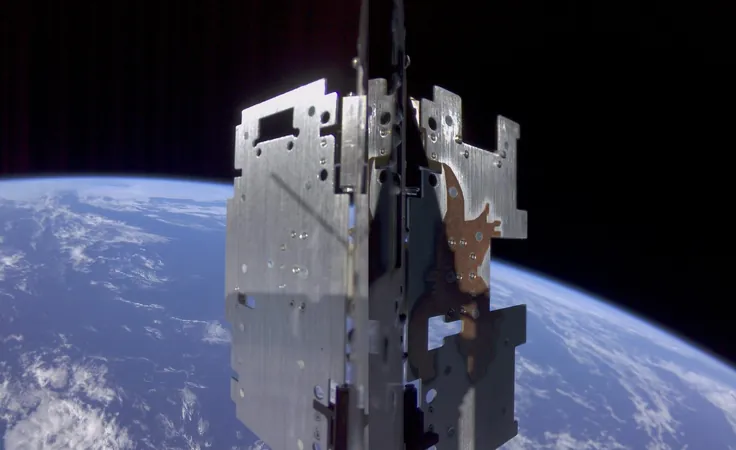
Australia's SpIRIT Nanosatellite Takes Major Step Forward in Space Exploration
2025-09-23
Author: Emma
Australia's SpIRIT Nanosatellite Achieves Key Milestone
Australia's SpIRIT nanosatellite has made waves in the cosmic arena by successfully completing the initial phase of its mission, solidifying the country's position in the ever-evolving global space industry.
A Collaborative Endeavor
This groundbreaking project, spearheaded by the University of Melbourne in partnership with the Italian Space Agency (ASI), is noteworthy for being the first space telescope equipped with a foreign agency's scientific instrument as its primary payload.
Launched aboard a SpaceX Falcon 9 rocket in December 2023, SpIRIT has completed an impressive over 9,000 orbits around Earth and has remained in space for more than 600 days.
Innovative Design for Stellar Performance
The uniquely designed wings, developed by the University of Melbourne, play a crucial role in cooling the telescope and enhancing its scientific capabilities. Now fully configured, the spacecraft boasts a remarkable size of nearly one meter.
Professor Michele Trenti, the Principal Investigator from the University of Melbourne, expressed excitement, stating, "We've completed extensive testing in space, and we’re thrilled that SpIRIT is ready to move on to the next exciting phase of its mission."
Capturing Cosmic Selfies!
A highlight of the mission’s first phase included the deployment of SpIRIT's innovative winged thermal management system and a unique selfie stick, which successfully captured a selfie in space! This delightful image, featuring the satellite adorned with the logos of its collaborating partners, was transmitted back to Earth.
Onward to Gamma-Ray Burst Detection!
With an operational lifespan expected to exceed 1,000 days, SpIRIT is shifting from its testing phase to a groundbreaking mission focused on scientific observation. Its advanced HERMES X-ray detector will scan vast sections of space to identify elusive cosmic explosions known as gamma-ray bursts—phenomena resulting from stellar collisions or deaths that are challenging to detect.
SpIRIT will serve as an early warning system, alerting astronomers to these explosive events for in-depth investigation.
A New Era for Australia in Space
Enrico Palermo, head of the Australian Space Agency, celebrated this milestone, highlighting the potential of the Australian space sector: "The SpIRIT mission showcases our capabilities—from satellite development to international collaboration in science. We commend the persistent efforts of our team and partners at the Italian Space Agency for their commitment to long-duration space operations."
Teodoro Valente, President of the Italian Space Agency, echoed this sentiment, noting, "This achievement illustrates the excellence of Italian space science and reinforces the strategic importance of our scientific collaboration with Australia."
With SpIRIT leading the charge, Australia is set to redefine its role in the global cosmos—ushering in a new age of innovation and exploration!









 Brasil (PT)
Brasil (PT)
 Canada (EN)
Canada (EN)
 Chile (ES)
Chile (ES)
 Česko (CS)
Česko (CS)
 대한민국 (KO)
대한민국 (KO)
 España (ES)
España (ES)
 France (FR)
France (FR)
 Hong Kong (EN)
Hong Kong (EN)
 Italia (IT)
Italia (IT)
 日本 (JA)
日本 (JA)
 Magyarország (HU)
Magyarország (HU)
 Norge (NO)
Norge (NO)
 Polska (PL)
Polska (PL)
 Schweiz (DE)
Schweiz (DE)
 Singapore (EN)
Singapore (EN)
 Sverige (SV)
Sverige (SV)
 Suomi (FI)
Suomi (FI)
 Türkiye (TR)
Türkiye (TR)
 الإمارات العربية المتحدة (AR)
الإمارات العربية المتحدة (AR)